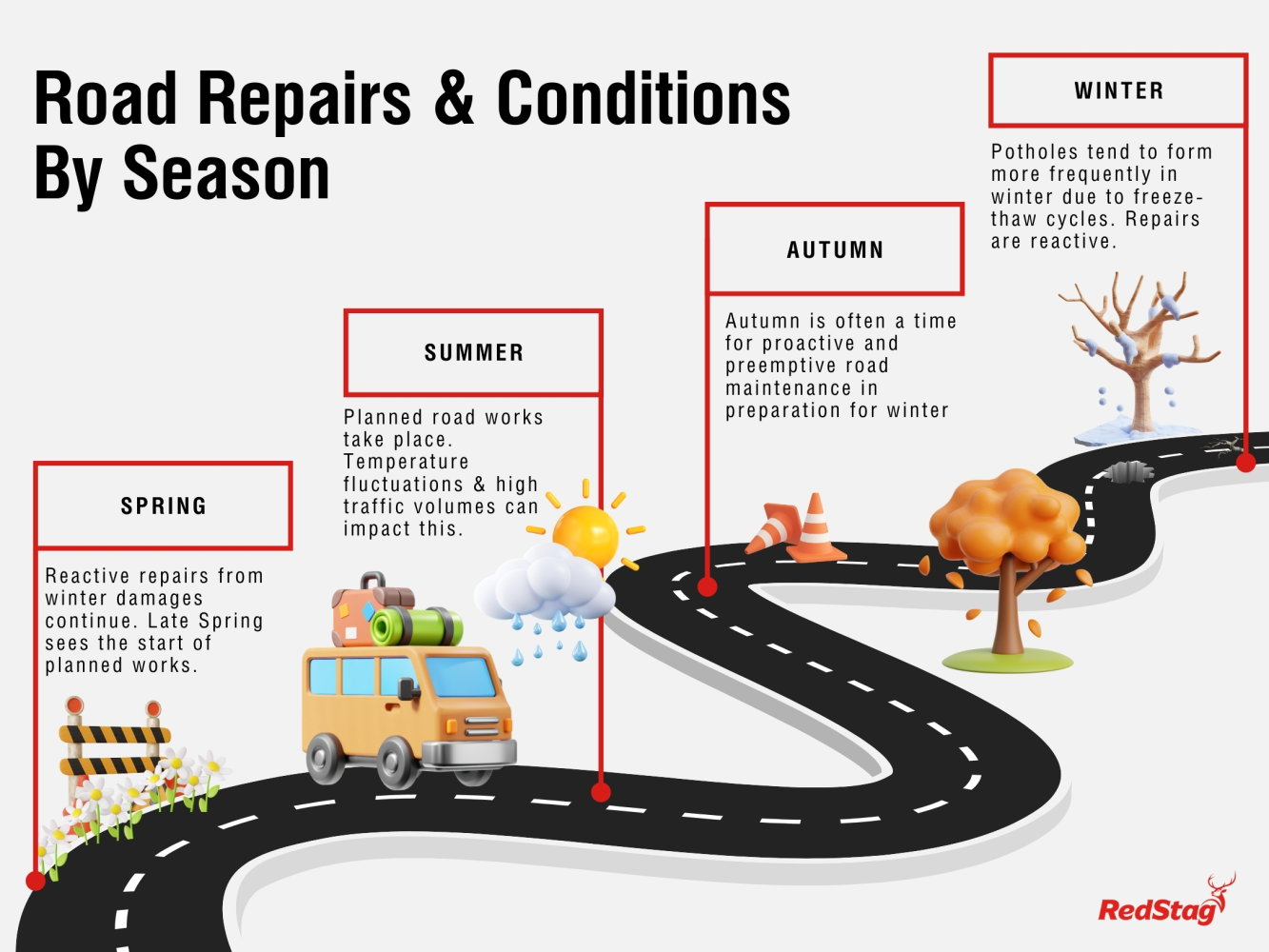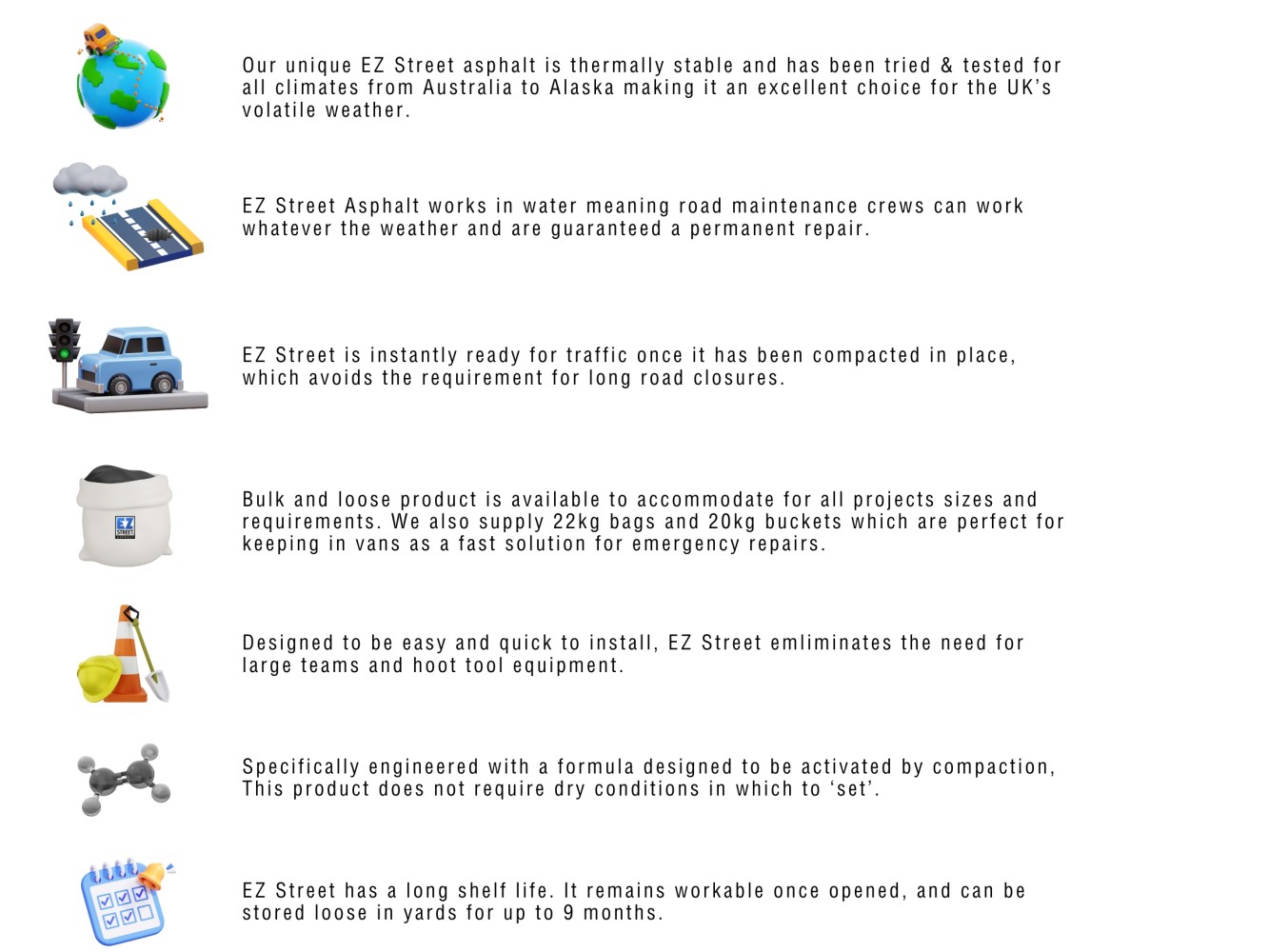With winter and spring revolving around reactive repairs, the time for preemptive road maintenance is now.
- Repairing road surfaces and potholes earlier, when they are smaller, helps to reduce costs. Not repairing surfaces at the first signs of damage can mean larger repairs or resurfacing is required which will be more expensive. With weather worsening in winter as temperatures cool and become wetter, conditions of roads deteriorate.Being proactive with planned repairs at this time can save money in the longer term.
- Why now? Traditionally cold lay asphalts can on dry and moderate temperature conditions to adhere and set. Using engineered, polymer modified technology, the calendar for repairs opens up with EZ Street as this innovative cold repair products relies on compaction to activate the material.EZ Street also works in water making it an appropriate choice for the UK market where conditions are often unpredictable.
- Summer isn't always the best time for repairs.Traffic volume and road closures are a key factor when scheduling repairs. In the summer of 2023, motorway traffic rose by 3.8%, while traffic on 'A' roads and minor roads also saw notable increases. This weakening of the road surface increases with higher traffic volumes and heavy vehicles, leading to potholes and rutting.Waiting for schools to return and choosing a material which is instantly traffic ready will eliminate the need for lengthy closures.
- Sustained high temperatures can cause some asphalts to soften and concrete pavements to buckle, creating hazardous driving conditions and accelerating the road's degradation. These factors combine to make late summer and autumn a critical time for road maintenance.
- Spring: With the weather starting to warm up, roads can still be affected by heavy rain, leading to flooding and water pooling in low-lying areas. Spring also tends to be a time for road maintenance, as damage from the winter months is repaired.
- Summer: In contrast, summer brings dry and warm conditions. However, extreme heat can soften some asphalts, making it prone to rutting and cracks, especially under the pressure of heavy traffic. Heavy rainstorms or flash floods during summer can also cause localized flooding and drainage issues.
- Autumn: Falling leaves can create slippery surfaces, especially when wet, reducing tire grip. Rainfall also increases during this season, leading to more road surface wear and the possibility of localized flooding. Autumn is often a time for road maintenance in preparation for winter.
- Winter: Roads can become icy and slippery due to frost, snow, and freezing rain, increasing the risk of accidents. Gritting and salting are commonly used to prevent ice formation. Potholes also tend to form more frequently in winter due to freeze-thaw cycles, where water freezes in road cracks and expands, causing further damage.
Finding the correct materials is integral to the success of road repair and maintenance in the UK's temperamental climate. There are many reasons EZ Street Asphalt is the trusted choice by councils, private customers and industry leaders worldwide.
Why EZ Street Asphalt is leading the way in road surface repairs
Overall, the UK's road conditions are heavily influenced by seasonal changes both in weather and traffic volume. With winter and summer posing the greatest risks due to extremes of cold and heat, while spring and autumn bringing milder but still challenging conditions the key is having a material such as EZ Street asphalt, that you can rely on to work in all weather conditions.




